I’m having one of Those Weeks. Umpteen attention-beggars. A gazillion interruptions. Unprioritized Priorities taking over every task list. And the Great Battle of Indecision in Decision-Making.
True, it’s all part of the adventure of life! I’m happy it’s Friday, and I look forward to some time to Un-muddy the Mind this weekend.
And how will I unmuddy the mind? Well, for one thing, I’m going to make a decision! I always tackle the questions that need a decision, first. Indecision can be crippling, when it comes to moving forward on a project or plan. So the quicker I can solve the decision dilemma, the better.
In life, there are lots of huge decisions that we all have to make at some point or another. I’m not really talking about one of those biggies. Not at all! I’m talking about a decision that, in the scheme of things, is really rather trivial. But it has thrown a wrench in my forward movement. And so I need to tackle it.
This weekend, I will make a thread decision.

Told you it was trivial!
I’m trying to decide what threads to use on this embroidered maniturgium project that I told you about here.
I very much want to work the letters in shades of blue, from light to dark.
My dearest desire is to use silk. (Silk is always my dearest desire.)
But gaaaaaah! There are a few hang-ups to using silk. And so I need to decide: am I going to use silk, or am I going to use cotton?
I pulled some silk to give it a little trial.
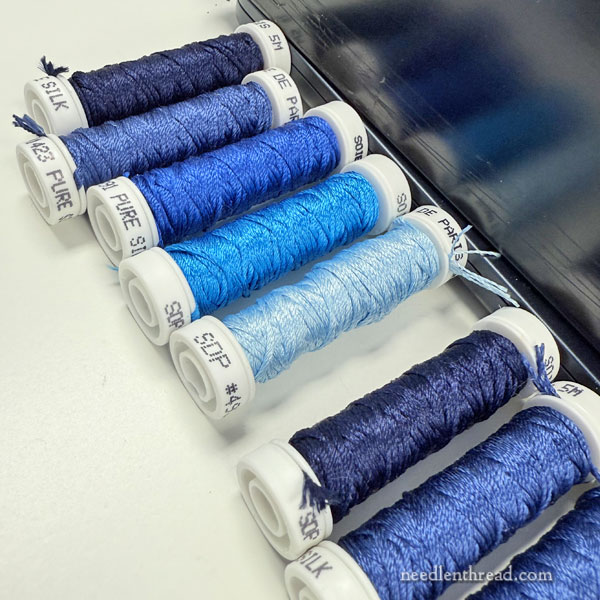
These are the silk threads I pulled – five shades of blue that I’d like to blend together in a long and short stitch approach.
The thread is Soie de Paris, a filament silk that has a high, beautiful, natural sheen. It is a slightly twisted stranded silk, meaning that the thread coming off the spool separates into (six, in this case) finer strands.
If you’d like to read more about filament silks like this, take a look at these two articles below. They’ll give you a better idea of the type of thread I’m working with here.
Silk Hand Embroidery Thread 101: Twisted Filament Silk
Working with Soie de Paris

To experiment, I transferred a few elements of the design to a scrap of the same linen I’m using as the ground fabric. I marked up the design further (I’m just using a pencil), using a ruler and drawing in five horizontal “levels” to the letter. I also added a bunch of vertical lines straight down the letter.
The horizontal sections are meant to give me an idea of where the shades should shift to the darker shade, working down the letter. Why do I need to mark it? Well, since I’ll be working with a hoop and moving the hoop along the length of the lettering, it’ll be difficult to keep the shading levels more or less eve across the whole line of lettering. I think marking the horizontal shading shifts will be helpful.
Why the vertical lines?
For this to work the way I envision, the letters need to be embroidered vertically, straight up and down, and not following the curve of the letters.
If I were embroidering in a solid color, or if I were shading the letters according to their curves, it wouldn’t be necessary to stitch vertically. But since I’m trying to mimic water depth from light to dark straight down all the letters across the whole line of lettering, the stitching needs to be vertical.
And on a curved element like a letter, I know I would have a hard time keeping things really vertical. Guidelines are helpful.
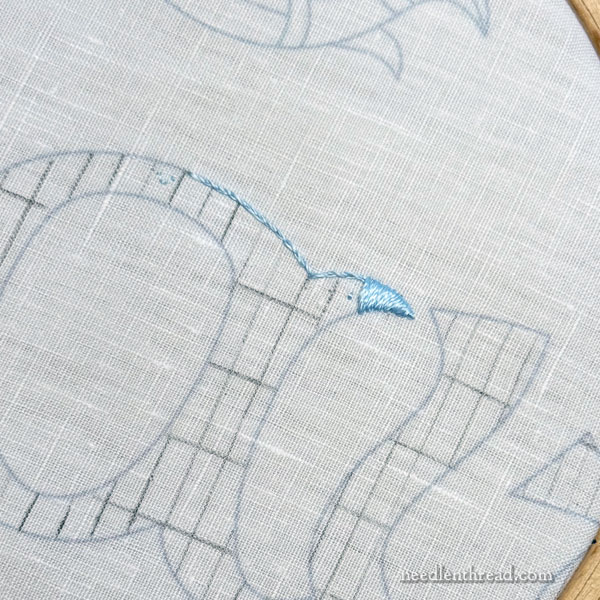
I really wanted to sit down for a good stretch of time and do some stitching, but as you can see, that didn’t happen!
I managed a wee bit of split stitch along the top of the letter using one fine strand of Soie de Paris, and then I began filling the top of the letter in the area you see above, using satin stitch. For the filling, I’m using two strands of Soie de Paris. This may change.
In fact, a lot may change. The thread may change! This is where I need to make my decisions!
As much as I love the silk – and I really do love it – and as much as I love the sheen, especially for stitching water (!!! Oh yeah !!!) – I’m not sure I am up to the stress of stitching with this thread right now.
For one thing, I will likely need to use magnification, which will slow me down considerably.
For another, my fingers are summer-work rough. And rough fingers and filament silk don’t get along well.
I need to test stitch a little more. I will do that this weekend, when I can work in peace and quiet with no interruptions.
Spun Silk
There is a third option between Soie de Paris and cotton – and that’s spun silk, specifically Soie d’Alger. Today, I’ll see if I can come up with a decent color scheme of Soie d’Alger from my stash, and I’ll add that to the testing plan.
Why would Soie d’Alger work better for me, over Soie de Paris?
If you’re not familiar with spun silk like Soie d’Alger, you can read more about it here.
For a project like this, it could work better because it’s easier to see (it’s not quite as fine), and it’s easier to handle. It doesn’t snag of fly away in the same way that filament silk tends to.
Yet spun silk still has a beautiful sheen – more so than cotton, not quite as much as Soie de Paris.
Soie d’Alger also has a nice “spread” when you’re stitching with it. It covers nicely, even when you’re just using one strand.
So Soie d’Alger is a possibility. The drawback is that I don’t really have a good stash of that thread, so I may not be able to come up with a good range of blues in the quantity I’ll need.
Cotton
Stranded cotton is likely the easiest to stitch with for this project. It doesn’t tend to snag on my fingers (unless they’re particularly rough), it’s easier to see, it’s readily available, and on and on.
The drawback:
Well – it’s not silk, is it?
One point to keep in mind, too: the end user does not really know, and would not really notice, a difference between whether the piece is embroidered in silk or in cotton. It really is just a matter of my preference.
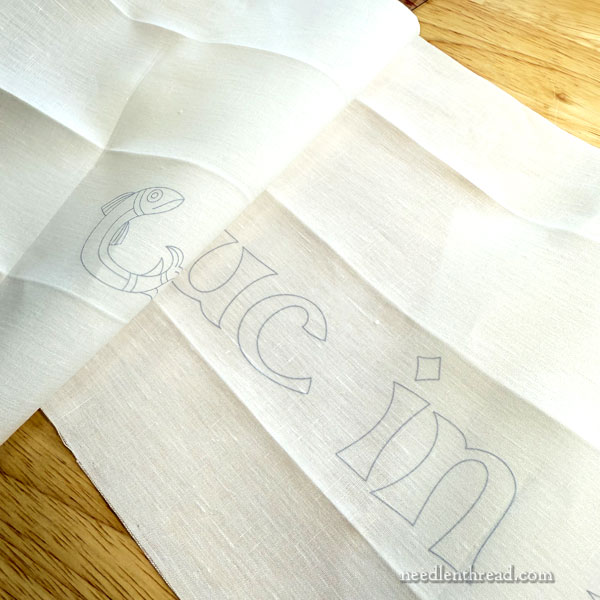
I’ve already got the design transferred and ready to go. I just need to make a thread decision!
I’ll make that decision before the weekend is over.
Coming Up
Next week, we’ll move forward on the next installment of Garden Swirl, addressing several more flowers. If you’re a member of the Needle ‘n Thread community on Patreon, you received a new PDF download yesterday covering the next group of flowers. Feel free to pop over the Patreon and download it!
We’ll have news of kits and boxes for Garden Swirl early this coming week.
I still have a stack of great new embroidery books that I want to share with you! I’m working on that!
And other than that, we’re working on other projects and kits, and staying cool (inside!) out here in (hot!) Kansas.
Have a terrific weekend!


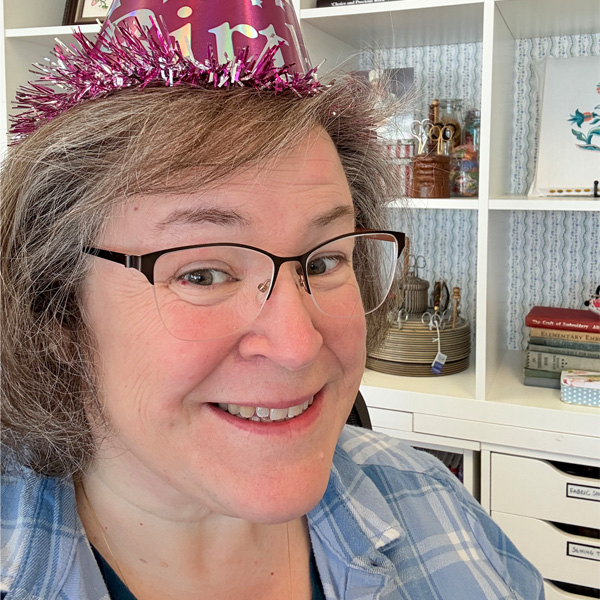

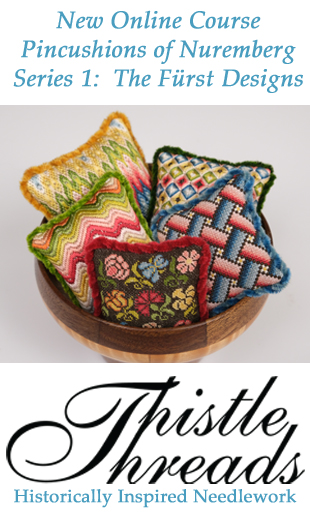
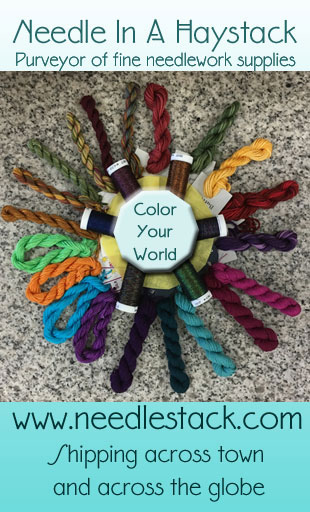
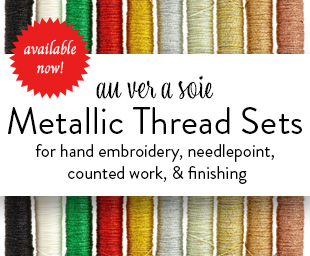

I know about work rough hands vs silk! To try to combat that problem I scrub my hands well with Lava soap then when dry and about to stitch I take a regular cheap nail file and sand my cuticles and fingertips until I don’t feel snags. The cuticles are always the worst offenders for me so I sand that skin as flat as I can. I hope this may help someone else 🙂
Try some Badger Cuticle Care every night before you go to sleep. It will take about three days for your cuticles to smooth out. If you keep filing them, you will cause them to become more and more callused. The Badger says “Carry beauty in your hands” and he’s right. Happy needleworking!!!
Loving this project! Thank you for sharing! Could you tell us how you transferred the lines so precisely? Thank you!